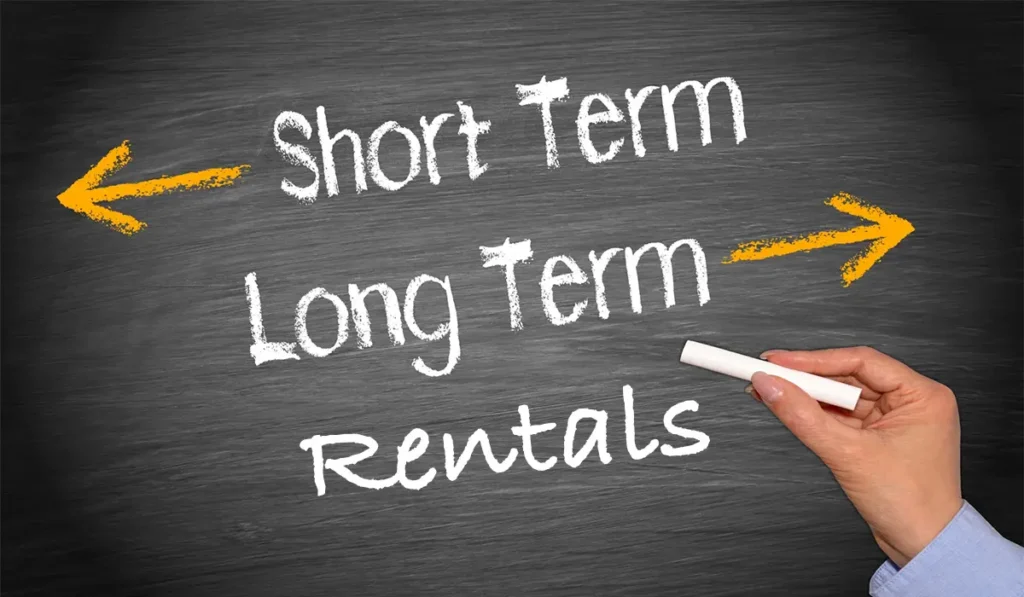As property investors, one of the most pivotal decisions you’ll face in your journey is when—and if—it’s time to transition from owning long-term investment properties to short-term rentals (STRs). This shift can drastically impact your portfolio and, when done correctly, can lead to a significant boost in rental income. However, it’s not a decision to be taken lightly.
In this email, I want to take you through the key considerations around this transition, the inherent risks involved, and how to determine when it’s the right time for you to make the move. I’ll also discuss why short-term rentals, while highly lucrative, require a different mindset and approach compared to traditional long-term investment properties.
The Risk Factor: Understanding What You Can and Can’t Control
When it comes to investing, one of the most important factors to understand is risk—and more specifically, what aspects of your investment you can and cannot control. Let’s break it down:
What We Can’t Control:
- Market Trends and Economic Conditions: We can’t predict what the market will look like in the future. Property prices may rise or fall based on a wide range of factors—interest rates, economic conditions, government policies, and even global events like recessions or pandemics.
- Interest Rates: While we can plan around current interest rates, we cannot control their fluctuation. A sudden increase can impact the affordability of our mortgages and the overall profitability of our properties.
- Local Property Markets: Real estate markets are hyper-local, and sometimes, trends that seem promising in one area can shift quickly due to changes in supply and demand, infrastructure development, or local regulations.
What We Can Control:
- Where and What We Buy: While we can’t predict future markets, we can make intelligent, data-driven decisions based on what’s happening now. For example, buying in growing areas or in areas with clear signs of future development (such as improved transport links, infrastructure upgrades, or increasing population density) can reduce the risks associated with price fluctuations.
- Buying Under-Market Value: One strategy to mitigate risk is to purchase properties below market value. This gives you a buffer, as the property has built-in equity from the start, which can protect you against downturns in the market.
- The Quality of Your Investment: Ensuring you purchase a property with strong fundamentals, such as a desirable location, potential for capital growth, and solid rental yields, can help ensure long-term success.
Long-Term Investment Properties: Stability and Growth
For many property investors, the journey begins with long-term investment properties—those designed to provide steady, predictable income over time. These properties are typically leased to tenants on a 6-12 month basis, providing a consistent cash flow while the property appreciates in value.
The beauty of long-term investment properties is that they are relatively passive. Once a tenant is in place, the property typically requires minimal management, and the risk tends to be more manageable. The value of the property may fluctuate over time, but the income stream remains fairly predictable, especially in strong, growing markets.
This type of investment is usually more suitable for investors looking to build wealth steadily while keeping risk at a lower level. They’re particularly attractive to those who prefer stability and a longer-term approach to property ownership.
However, the downside is that the returns from long-term rental income are often lower than what can be achieved through short-term rentals. In today’s environment of rising property values, long-term rental yields in some areas may not be enough to generate significant income, especially if you’re relying on rental properties to cover your costs and generate cash flow.
Short-Term Rentals: High Risk, High Reward
Short-term rentals (STRs), particularly through platforms like Airbnb and Vrbo, are a different beast altogether. While they offer the potential for much higher income than traditional long-term rentals, they come with a level of risk that can sometimes overwhelm new or unprepared investors.
The income from short-term rentals can fluctuate greatly depending on factors like:
- Seasonality: Certain locations experience peak demand during holidays, events, or high tourist seasons, while others may be dead during the off-peak months.
- Local Regulations: Many cities have implemented or are considering stricter regulations on short-term rentals. From limits on how many days per year you can rent a property to licensing requirements and taxes, these factors can impact your rental income and overall profitability. It’s worth understanding what Airbnb penalizes and how visibility can drop due to misstep
- Maintenance and Operational Costs: Managing an STR often means having a higher turnover of guests, which can increase maintenance costs and the wear-and-tear on the property. You’ll need to factor in professional cleaning services, emergency repairs, and potentially higher property management fees.
- Competition: In high-demand areas, competition can be fierce, and standing out with your property and attracting guests becomes a major challenge. Without effective marketing and operational excellence, your property can easily be overshadowed by others.
In terms of income potential, short-term rentals can offer far higher returns than long-term leases. However, the key to success in STRs is precision—choosing the right property, in the right location, and setting up your STR business in a way that maximizes its potential.
You can’t simply buy a property and hope that it will perform. STRs are a business, and just like any other business, they require strategy, planning, and consistent effort. From designing your space effectively to managing guest expectations and understanding how guest psychology affects reviews, each detail counts.
The reality is that, once you dive into short-term rentals and experience the income potential, you may never look back. The reward for effort and proper setup can be substantial. But it’s essential to approach this type of investment with a business mentality, where every decision impacts your bottom line.
When is the Right Time to Transition?
So, when should you make the switch from long-term investment properties to short-term rentals? The general advice we give to investors is to consider transitioning after you’ve secured around four or five long-term properties—especially if you have low cash flow reserves. Here’s why:
- You’ve Built Stability: By the time you have a few long-term rental properties, you’ve already established a solid financial foundation. Your long-term properties provide stability and consistent income, which can help buffer the risk of entering the STR market.
- You’ve Accumulated Knowledge and Cash Flow: After owning multiple properties, you’ll have gained valuable experience in managing your investments. Plus, with several long-term properties in your portfolio, you’ll likely have accumulated a cash reserve, which can help cover the upfront costs and operational expenses associated with STRs.
- You’re Ready for Higher Risk: Transitioning into STRs means taking on more risk. STRs require constant monitoring, managing, and adapting to market conditions, guest expectations, and local regulations. By this point, you’ll be in a better position to handle these demands, both financially and mentally.
The Bottom Line: Why Short-Term Rentals May Be the Future of Your Portfolio
If you approach short-term rentals with the right mindset, they can unlock much higher rental income than long-term properties. But they’re not without challenges—STRs require precision, planning, and management. If you’re considering the switch, it’s important to understand that once you buy an STR and experience the returns, you’ll likely never go back to long-term rentals. The potential for increased cash flow and better returns is often irresistible once you see how well a property performs.
However, this path requires a strategic approach. It’s not just about buying any house and hoping it will perform. It’s about choosing the right property, identifying the right location, and setting up your business to succeed. With careful planning and a clear strategy, short-term rentals can provide unparalleled returns on investment.
If you’re feeling unsure about the process, know that you’re not alone. Many investors who initially focused on long-term properties eventually make the leap into short-term rentals and are often surprised by how much more lucrative the strategy can be.In conclusion, the decision to move from long-term investment properties to short-term rentals is not one to take lightly. But if you’ve built a solid base of long-term properties and are prepared to take on the additional challenges that come with STRs, it could be one of the best decisions you make for your property portfolio.




